This week we have a look at an interesting social enterprise called African Clean Energy. With the help of their clean cooking stove, called the ACE1, the company is leading the fight against indoor smoke pollution with the help of solar photovoltaic energy.
Indoor smoke pollution is a major problem in many developing countries in the southern hemisphere, which causes over 4 million deaths a year.
Sinovoltaics recently came across this interesting family company when our team at Sinovoltaics helped African Clean Energy with the quality assurance of their solar module purchases in China. The solar modules are one of the few components that are not manufactured by African Clean Energy themselves.
How the ACE-1 clean cookstove works
The ACE-1 clean cooking stove works according to a simple principle:
A fire is lit inside the cooking stove. A Solar charged battery drives a fan, blowing extra oxygen from the bottom of the unit into the fire. This extra oxygen increases the temperature of the fire drastically, up to 1,000°C.
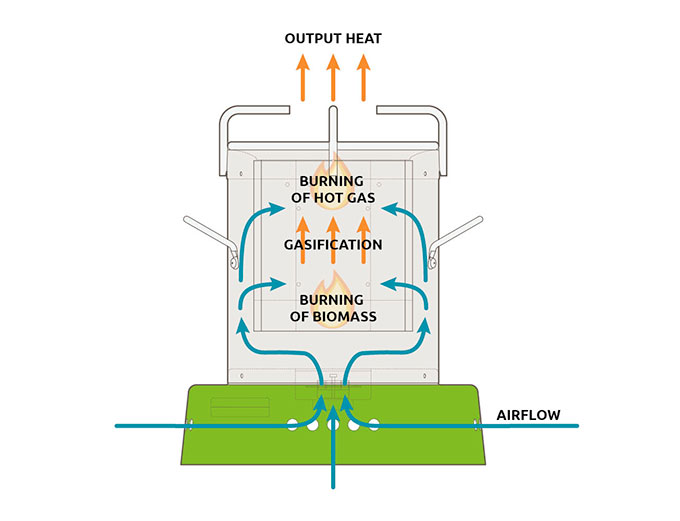
Working principle Ace 1 clean cookstove
At this temperature, fuel is gasified, meaning combustion is at its most efficient, and no smoke is released. The fan is connected to an internal battery, which is charged daily with a custom-made small solar panel.
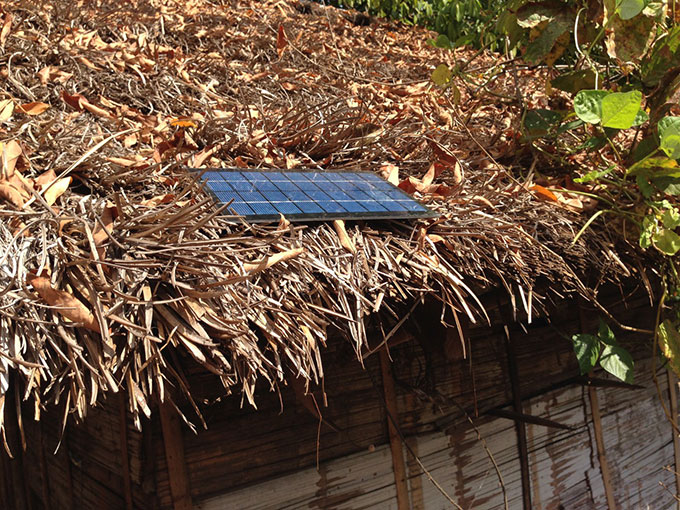
A solar panel that charges the ACE-1 battery
To learn more about the ACE-1, and the organization behind it, Dricus interviewed Judith Walker, Operation Manager at African Clean Energy.
Interview African Clean Energy about the ACE1 cooking stove
SINOVOLTAICS: Thank you for accepting our request for an interview. So, to start with right away: how did you come up with the idea to develop a clean cooking stove?
Judith Walker: The company African Clean Energy was founded by my father Stephen and my brother Ruben Walker. Stephen knew the technology existed to eradicate cook smoke and started to research how to best make a product to do so. Basically, he saw the potential in bringing this clean cooking stove to market and contributing to solving a major problem: death and illness from indoor air pollution caused by cooking.
The company manufacturers its ACE-1 clean cooking stoves in Lesotho, South Africa. The product has been on the market for about a year now and the first 12,000 units of the latest model have been sold.
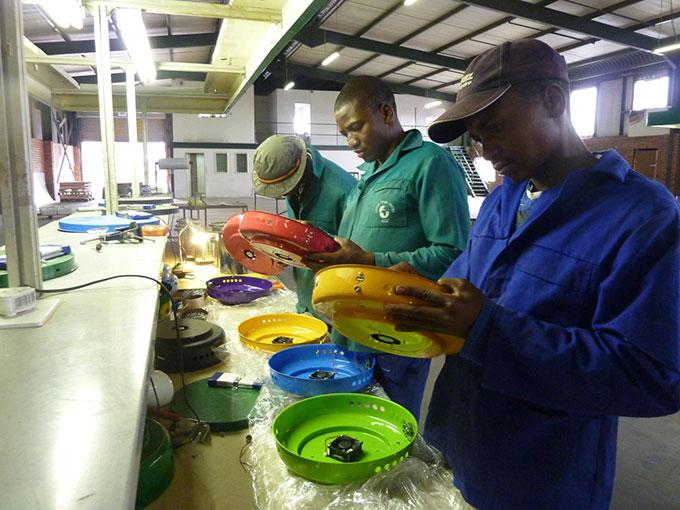
ACE1 clean cookstove – Assembly line at the factory in Lesotho
SINOVOLTAICS: How are people able to afford a clean cooking stove?
Judith Walker: Customers can purchase the cooking stove outright, or African Clean Energy can provide direct micro-financing.
Group purchases are becoming more popular these days. African Clean Energy receives credit from KIVA (http://www.kiva.org/) for the financing of group purchases. Customers can pay such loans back over a period of 9 months. The fact that people are responsible for the repayment of the loan as a group seems to work very well, as there have been zero defaults so far.
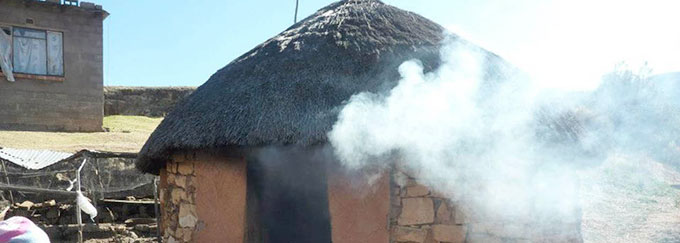
Indoor smoke pollution
SINOVOLTAICS: How do you arrange the repayments on the micro-credit that you offer?
Judith Walker: People increasingly use their mobile phones for re-payments. They can make mobile payments by text message and even send someone else money with the use of a basic mobile phone. Most customers have ‘old-fashioned phones’ that have 2-week battery life.
For micropayments on their ACE-1 product, customers use the mobile payment system M-Pesa from Vodacom.
One great thing to mention is that repayments are usually paid for by the savings on fuel
“I believe if we can solve major problems in developing countries right now, we should do so. There’s no need to wait until the next, new technology will pop up”.
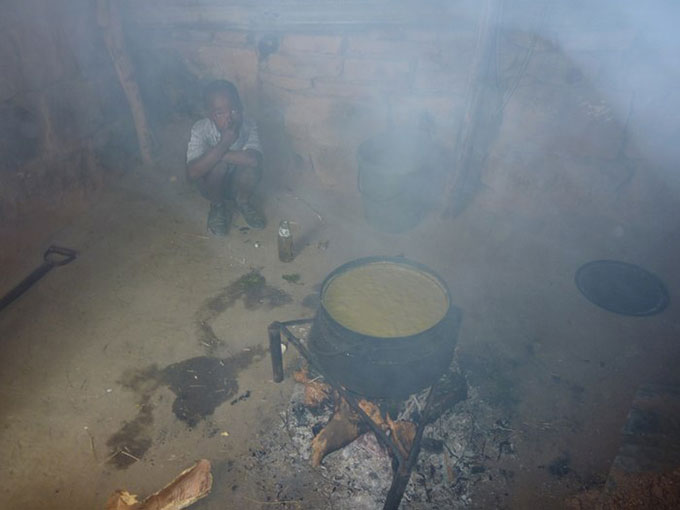
The typical indoor cooking stove can be replaced with an ACE1 cookstove
SINOVOLTAICS: What’s the average income of the people you’re selling to?
Judith Walker: Usually it’s difficult for people to explain their monthly income exactly, as a lot of them don’t have a regular income. Their income is often from farming (seasonal) or irregular jobs. Therefore the better question to ask is: how much do you spend on energy? Including candles, wood, LPG, paraffin, and the electricity for charging your mobile phone at the local shop?
In an average developing country, people spend up to 25% of their income just on fuel for cooking. These fuel expenses can be cut by around 50% after purchasing the ACE-1 clean cooking stove.
“I have big respect for my parents, dealing with all the challenges of running a factory in Lesotho , but it’s great to be working somewhere where you can have so much impact.”
SINOVOLTAICS: Is the option to power LED lights and charge a phone an important feature of your product, or do people mainly purchase the ACE-1 for the cooking function?
Judith Walker: Yes it’s an important feature. The option to charge a mobile phone is important as people often rely on mobile payment systems.
Cooking and lighting are actually more intertwined than you might think. A lot of people in South Africa use the same fuel for cooking as they use for lighting, such as paraffin.
When looking at people’s daily energy usage, in certain regions cooking stands for approximately 80% of people’s daily energy usage. That’s a huge number.
With ACE-1 people use up to 75% less fuel, compared with traditional open fires, and completely eliminate indoor air pollution. It’s a product that people desperately need: an efficient clean cooking stove, which doesn’t cause any air pollution.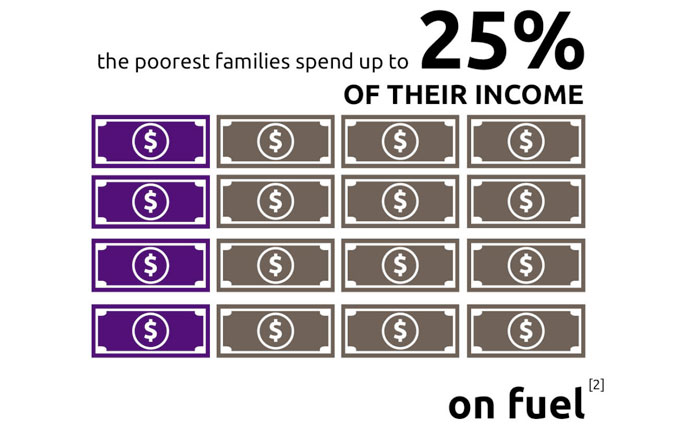
SINOVOLTAICS: In the near future, people in developing countries will have far larger energy needs than charging a mobile phone and powering LED lights. Are you planning to introduce new products that will cater to this?
Judith Walker: Yes, in the long run, people will have much larger energy needs, and our company is looking for future solutions.
However, I believe you don’t necessarily have to get there in one step. With the introduction of this consumer product, people have access to some electricity, they will save a lot of time as they need to collect less fuel, and their health improves. With this improved situation, you’ll see economic benefits and this will allow for the next steps on a later day.
For this reason, we’re also expanding our market for the ACE-1 one to Southeast Asia, starting with Cambodia.
SINOVOLTAICS: That sounds very promising and with the worsening pollution surely many people in Southeast Asia will benefit from the ACE-1. Thank you Judith for the interview!
Judith Walker: You are welcome, thank you, too!
Want to offset your CO2 emissions?
Cooking fires worldwide cause major CO2 emissions, compared with the entire global shipping industry. Conservatively calculated, one ACE1 clean cooking stove reduces 10 tons of CO2 over 8 years. As each hour of plane flight is about 1/4 Ton of CO2 per passenger, that’s the equivalent of 40 hours of flights!
Visit Africa Clean Energy at www.africancleanenergy.com






